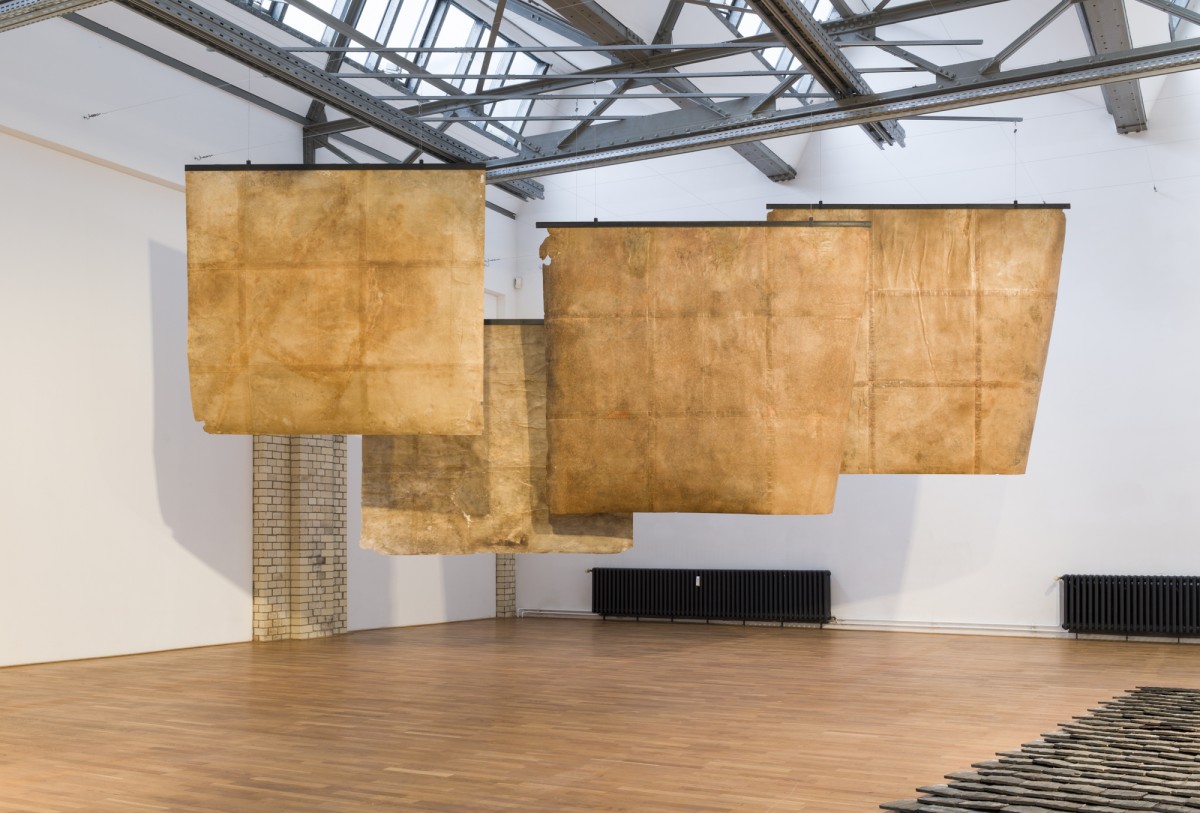EN
The four-part “Palimpsest” installation is made of Hanji Jangpan, a paper which was tradi- tionally used to line the floors of Korean houses. After several years of researching and studying the material, the artist was given the opportunity in 2021 to partition off the floor- ings of four individual rooms in their entirety. In “Palimpsest,” they hang from the ceiling, seeming to float freely and staggered one behind the other. Detached from their original context, they appear almost equal in their square dimensions, but provide little information about the former function of the rooms from which they were removed. Rather, they reveal the concept of a flexible use of space that characterized Korean living culture until the 20th century: life played out mainly on the floor and without much furniture, so that people could eat and sleep in the same room. This idea of surfaces that can be emptied to then carry new meaning is also mirrored by the title, as the term ‘palimpsest’ refers to manuscript pages that are stripped of writing in order to be overwritten with new text. Not least, the visual appearance of the work also supports this comparison. Lee framed the upper edge
of each Hanji Jangpan floor with a metal bar which creates the impression of open scrolls. This ultimately hints at the origin of the material taken from the historical study house of Korean philosopher Choe Chiwon (857–10th century).
Text: Lydia Korndörfer






